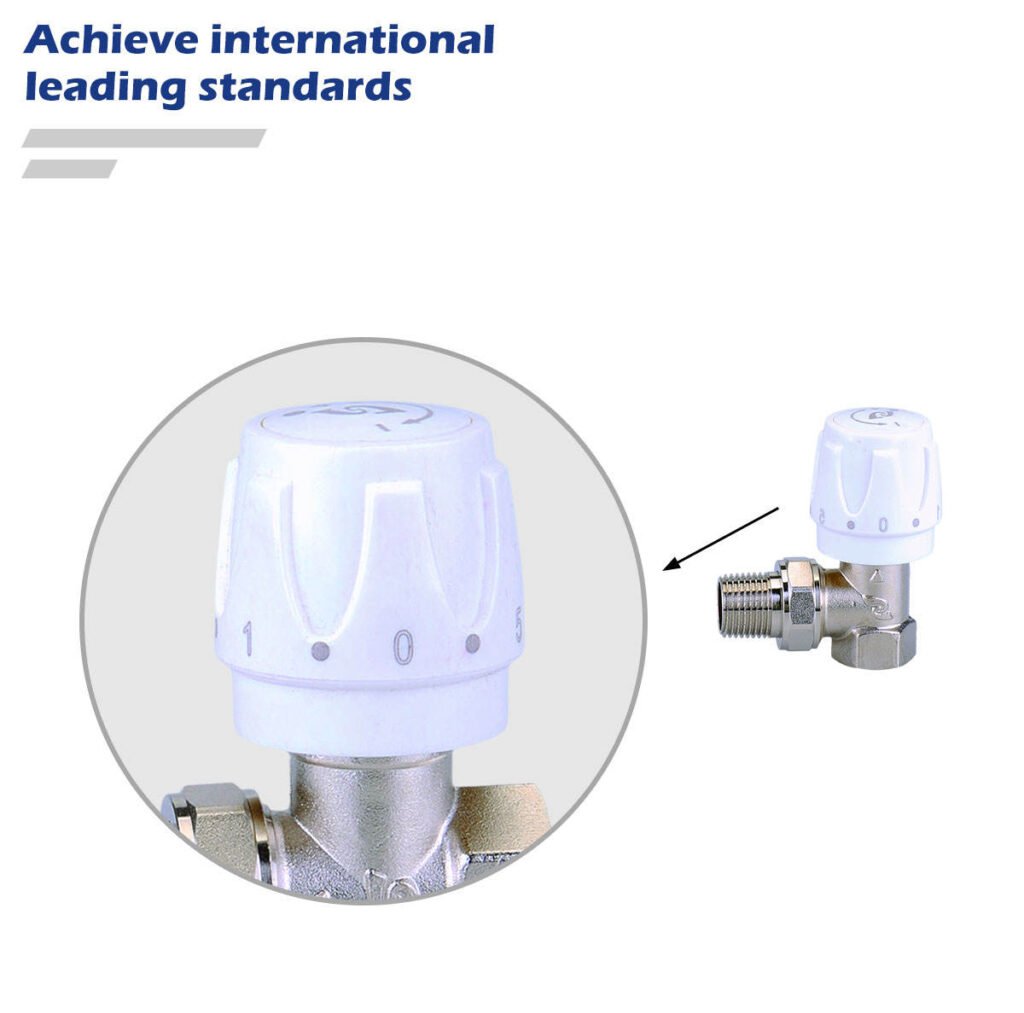Ever struggled with a radiator that just won’t heat up right, no matter how much you tweak it? It’s frustrating—wasted energy, cold rooms, and rising bills can really pile up. The fix might be simpler than you think: understanding if radiator valves are directional. Stick with us, and we’ll break it down so you can solve this once and for all.
Radiator valves are directional. They control water flow into and out of your radiator, and installing them the wrong way messes up heating efficiency. Most have arrows showing the correct flow direction—ignore them, and you’re in for trouble.
Curious how this works in real life? Hang on—we’re diving deeper into radiator valves explained, from directions to tweaks, so you can keep your system humming perfectly.

Which Direction Should a Valve Be?
Let’s get straight to it: radiator valves need to face the right way to work properly. Most valves—like the brass thermostatic radiator valves we craft at IVALVECRAFT—come with a little arrow etched on the body. That arrow tells you which way the water should flow. If you slap it on backward, the valve won’t regulate the heat like it should. You’ll end up with a radiator that’s either too hot, too cold, or just plain inconsistent. For folks like Antonio in Russia, who’s all about quality checks, this is a big deal—unstable export pressure or flow rate can ruin a whole heating setup. Get it right, and you’re golden: stable heat, happy customers. Mess it up, and you’re stuck with complaints. So, when you’re replacing radiator valves (think radiator valves replacement), double-check that arrow. It’s a small step that saves big headaches.
Do You Turn a Radiator Valve Clockwise or Anticlockwise?
Here’s a question we hear a lot: which way do you turn a radiator valve? It’s simple, but it trips people up. For most valves—like Danfoss radiator valves (check the Danfoss radiator valves manual if you’ve got one)—clockwise closes it, and anticlockwise opens it. Closing it stops the water flow, cooling the radiator down. Opening it lets more water in, heating things up. Easy, right? But here’s the kicker: thermostatic radiator valves, like the ones we make at IVALVECRAFT, adjust automatically based on room temp. You just set a number—say, 3 for a cozy 20°C—and it does the rest. No constant twisting needed. For Antonio, juggling brass valves and plumbing in Russia, this means less fiddling and more reliable performance. Still, if you’re tweaking manually, clockwise is off, anticlockwise is on—stick to that, and you’ll nail it every time.
Do Vertical Radiators Have a Flow Direction?
Vertical radiators are slick—tall, stylish, and great for tight spaces. But do they care about flow direction? You bet they do. Just like horizontal ones, vertical radiators need water to flow in and out the right way. The inlet (where hot water enters) is usually at the bottom, and the outlet (where it exits) is often at the top or opposite side. Flip that, and you’ll choke the flow—less heat, more problems. Our IVALVECRAFT radiator valves, built for sufficient flow rate, come marked with flow arrows to keep it simple. For wholesalers in Poland or the UK, or even DIY chain supermarkets, this matters—mess up the direction, and your customers notice fast. Vertical or not, radiator valves explained the same way: direction is king. Follow the arrows, and you’ll keep that heat pumping just right.
Wrapping It Up
So, are radiator valves directional? Absolutely—get the direction wrong, and you’re asking for cold spots or wasted energy. Point them the right way (check those arrows!), turn clockwise to close or anticlockwise to open, and yes, even vertical radiators need proper flow. Whether you’re replacing a valve (radiator valves screwfix has options) or setting up a new system, these basics keep things smooth. For pros like Antonio, buying from China for Russia’s market, it’s all about quality and reliability. At IVALVECRAFT, we’ve got your back with high-quality brass thermostatic radiator valves, pressure reducing valves, and more—perfect for wholesalers and construction projects alike.
Choose IVALVECRAFT, choose reliable partner, enjoy the high quality and best service.


